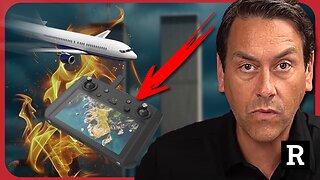Premium Only Content

#117 Captain's Mate
Captain's Mate In the traditional structure of managing a ship, there are typically three key officer roles, each with its own responsibilities and hierarchical order:
Captain: The captain is the highest-ranking officer on the ship and is in overall command. The captain is responsible for the vessel's safe navigation, the safety and well-being of the crew and passengers (if applicable), and all shipboard operations. The captain makes important decisions regarding the ship's route, safety procedures, and overall management.
First Mate (Chief Mate or First Officer): The first mate is the second-in-command and reports directly to the captain. This officer assists the captain in various tasks, including navigation, crew management, and ensuring the ship's safe operation. The first mate often takes command of the ship during the captain's absence and oversees routine operations.
Second Mate: The second mate is typically responsible for navigation, including maintaining charts, calculating positions, and ensuring the ship follows its planned course. They also stand watch and assist with safety procedures. In some cases, a ship may have a third mate (third officer) who assists the second mate.
In addition to these primary officer roles, there may be other officers and crew members with specialized duties, such as:
Chief Engineer: Responsible for the ship's engine room, machinery, and propulsion systems.
Deck Officers: Officers responsible for deck operations, including cargo handling, mooring, and navigation.
Electro-Technical Officers: Responsible for the ship's electrical and electronic systems.
Safety Officer: Ensures compliance with safety regulations and conducts safety drills and inspections.
Medical Officer: Provides medical care to the crew and passengers (if applicable).
Radio Officer: Manages communication equipment and radio transmissions.
Bosun (Boatswain): Oversees deck crew and maintenance of deck equipment.
Able Seamen: General deck crew members who assist with various tasks as directed.
The number of mates (first, second, third, etc.) can vary depending on the size and type of the ship. Larger vessels, such as container ships or cruise ships, may have a more extensive officer structure with multiple mates and additional specialized officers. Smaller vessels, like fishing boats or yachts, may have a simpler officer hierarchy with just a captain and one mate. The specific organization can also vary based on the ship's flag state regulations and the company's policies.
www.antharas.co.uk/ companies website or top book distributors!
#BusinessStrategy
#Entrepreneurship
#Leadership
#Management
#Marketing
#Finance
#Startups
#Innovation
#Sales
#SmallBusiness
#CorporateCulture
#Productivity
#SelfDevelopment
#SuccessStories
#PersonalBranding
#Networking
#Negotiation
#BusinessEthics
#TimeManagement
#GrowthStrategies
#MarketAnalysis
#BusinessPlanning
#FinancialManagement
#HumanResources
#CustomerExperience
#DigitalTransformation
#Ecommerce
#SocialMediaMarketing
#BusinessCommunication
#ChangeManagement
-
 9:56
9:56
AV
9 months ago#1148 Press release - Flush to Fuel
21 -
 LIVE
LIVE
BonginoReport
1 hour agoMedia Run Cover For Biden’s Illegal Terrorist - Nightly Scroll w/ Hayley Caronia (Ep.60)
3,860 watching -
 LIVE
LIVE
The Jimmy Dore Show
35 minutes agoRogan CLASHES w/ Bono Over USAID Funding! Palantir Will Soon Have All Our Data! w/ Gabor Maté
3,953 watching -
 DVR
DVR
Kim Iversen
4 hours agoTrump Just Signed Off On The Deep State Spying On You
16.7K34 -
 1:16:31
1:16:31
Ark of Grace Ministries
3 hours agoProphetic Alert: A Boiling Point in America and the Earth
3.34K6 -
 32:22
32:22
Stephen Gardner
1 hour ago🔥Lindsey Graham Betrays Trump as Putin Readies MASSIVE ATTACK!
1.04K25 -
 38:55
38:55
Kimberly Guilfoyle
8 hours agoThe Trump effect, live with Jarrett Stepman & Mike Davis | Ep226
52K13 -
 39:27
39:27
Redacted News
2 hours ago“The 9/11 Hijackers Never Flew the Planes” – Airline Captain Dan Hanley Drops BOMBSHELL | Redacted
26.1K137 -
 LIVE
LIVE
LFA TV
21 hours agoLFA TV ALL DAY STREAM - MONDAY 6/2/25
911 watching -
 1:14:25
1:14:25
Untamed Nation
2 hours ago🚨URGENT WARNING: THEY ARE ABOUT TO DO ANOTHER 9/11 ⚠ | 2 JUNE 2025
12.1K7